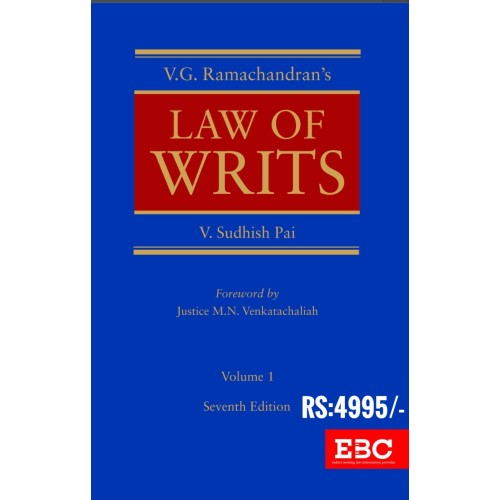Volume I
Table of Cases
Part I - INTRODUCTION
1. Judicial Review
2. England
3. India
Part II - GENERAL PRINCIPLES OF WRIT JURISDICTION
1. Constitutional Provisions
2. Locus Standi — Who May Apply
3. Against Whom Writ May Be Issued
4. Territorial Jurisdiction
5. Purposes for Which Writs May Be Issued
6. Delay and Laches
7. Alternative Remedy
8. Res Judicata
9. Natural Justice
10. Administrative Tribunals
11. Exclusion of Judicial Review
12. Administrative Discretion and Judicial Review
13. Other Features and Limitations of Writ Jurisdiction
14. Public Interest Litigation
Subject Index
Volume II
Table of Cases
Part III - SPECIFIC WRITS
1. Habeas Corpus
2. Mandamus
3. Prohibition
4. Certiorari
5. Quo Warranto
Part IV - MISCELLANEOUS
1. Supervisory Jurisdiction of High Courts
2. Special Leave Petitions
3. Constitutional Amendments
Part V - PRACTICE AND PROCEDURE
1. Principles of Procedure
2. Facets of Practice
APPENDICES
I. Constitution of India
II. Code of Civil Procedure, 1908
III. Supreme Court Rules, 2013
IV. Rules Framed by the Various High Courts under Articles 226 and 227
1. Allahabad High Court
2. Andhra Pradesh High Court
3. Bombay High Court
4. Calcutta High Court
5. Chhattisgarh High Court
6. Delhi High Court
Rules Framed by the Various High Courts under Articles 226 and 227 (Contd.)
7. Gauhati High Court
8. Gujarat High Court
9. Jammu & Kashmir High Court
10. Jharkhand High Court
11. Karnataka High Court
12. Kerala High Court
13. Madhya Pradesh High Court
14. Madras High Court
15. Manipur High Court
16. Meghalaya High Court
17. Orissa High Court
18. Patna High Court
19. Punjab & Haryana High Court
20. Rajasthan High Court
V. Model forms of Writ Petitions Under Articles 32 and 226 of the Constitution of India
Subject Index





